
by Deep Green Resistance News Service | Feb 19, 2017 | Education, Movement Building & Support
by Erin Moberg / Deep Green Resistance Eugene
On Saturday, February 4th, several members of DGR Oregon attended a day-long NVDA training in Eugene, Oregon. The event was organized by local and regional activists. Over 200 people attended, including local activists, community members new to direct action, college students, youth, retired people, and others from nearby towns.
DGR members attended this training as part of an increased effort to connect with Eugenians from other activist groups and to invite community members to two upcoming events: (1) a DGR Open House in downtown Eugene (March 8) and (2) an Advanced Direct Action Training to be held just outside of Eugene over Earth Day weekend (April 22-23). We also, of course, wanted to see what we could learn.
The Keynote Speaker was Leonard Higgins, who shared a short film documenting his experience as one of the “valve turners” who shut down oil pipelines in five states in October of 2016. Higgins described direct action as “not the only important work to be done” but crucial in that it supports other activist work, including: changing the economy, transitioning to alternative energies, and expanding community organizing strategies. Although his remarks and the entire training focused on “preserving life as we know it and civilization” and “ensur[ing] a future for human civilization,” Higgins and the film did help to normalize and demystify direct action for those new to environmental activism.
People who want to support the valve turners can attend a legal costs fundraiser event on the evening of February 24th at 6:30pm at the First Methodist Church near downtown Eugene. The suggested donation for the event is $20, but no one will be turned away for lack of funds.
The workshops (Medic Training, Encryption Basics, Jail/Arrest Support, Action Planning, “Artivism,” and more) emphasized peaceful resistance toward the end of sustaining or bettering life for human beings. Even when referencing the Water Protectors at Standing Rock, there was no concrete mention of the destruction of the land and little reference to the occupation of indigenous communities and territories by the culture of empire. While this may be simple omission, it’s a trend in mainstream activist groups—especially in predominantly white groups—to avoid naming the problem, and to avoid being “negative.”
Most frustrating in the workshops was the lack of organization and structure; many facilitators had poor presentational skills, little understanding of key semantic nuances of relevant terminology (ie: violence, use of protective force, and violation), and an overall lack of consciousness around anti-oppression strategies necessary to foster equitable engagement and collaborative environments.
This is unsurprising, as in our experience mainstream activist groups and NGOs such as this often serve as a sort of buffer against truly revolutionary change by funneling energy, donations, and volunteers into minor reforms.
In the workshop on Action Planning, the facilitator (a Portland-based activist) did share several strategies that could be useful for DGR meetings, direct action trainings, and forum culture. One is the acronym WAIT/WAINT (Why Am I Talking? / Why Am I Not Talking?), a variant of the Step Up/Step Back framework designed to encourage those who occupy positions of privilege and tend to dominate (white people, men, documented folks, etc.) to hold space for those whose voices and experiences are often silenced or ignored (people of color, women, undocumented folks, etc.). She also explained the “Points of Intervention Model” as way for activists to identify how, where, and when to plan a concrete direct action. This model asks organizers to consider points of production (ie: labor site), destruction (ie: mines), consumption (ie: households), decision (ie: corporate head), assumption (ie: segregated spaces), and potential before then deciding on:
- vision –> (2) campaign–> (3) strategy–> (4) tactic–> (5) action
Her example was:
- Stop climate change–> (2) Halt proposed pipeline construction–> (3) pass anti-pipeline legislation–> (4) forums, petitions, lawsuits–> (5) Not specified during the workshop
While the training was a good first step for first-time activists interested in learning more about political organizing, this day of workshops didn’t provide a compelling vision of the application of political power. For those with little to no activist experience, there were no clear articulations of the history, potential, and goals of direct action. For those who attended as experienced activists, there were no hands-on workshops offered for specific direct action skills trainings (ie: how to build and use lockboxes). The legal presentations, encryption info, and medic training did offer concrete skills that are valuable to organizers. In terms of community representation at this event, there were no facilitators of color, few female facilitators, and few opportunities designed to connect training participants one-on-one.
Overall, this training focused on issues leading up to or arising in the aftermath of direct actions, not the actions themselves. For organizing large groups to achieve reforms, it was a potentially useful training. However, for people interested in deep revolutionary changes, it was lacking.
Thanks to the organizers for hosting this event.
People interested in learning more advanced skills should contact DGR Eugene to inquire about our advanced direct action training scheduled for Earth Day weekend, April 22-23.

by Deep Green Resistance News Service | Feb 18, 2017 | Alienation & Mental Health, Human Supremacy, Listening to the Land
Featured image: Mauna Loa, night time view (Photo: Rustedstrings/Wikimedia/CC BY-SA 3.0)
by Will Falk / Deep Green Resistance
So many indigenous people have told me that the levels of sustainability their traditional cultures achieved prior to the arrival of colonizers were based on lessons learned from non-humans. Implicit in these lessons is the truth that humans depend on non-humans. This dependence is not limited to the air we breathe, the water we drink, or the food we eat. This dependence sinks into our very souls.
For many indigenous people I have listened to, the basic reality of human dependence demands that humans regard non-humans, regard life, regard the universe with deep humility.
If we simply learn to listen, we will hear non-humans demonstrating humility everywhere. Trees know they are nothing without soil, so they build forests as monuments to soil health – collecting, storing, and restoring nutrients to their life-giver. Salmon know they are nothing without forests to hold river banks together, so they swim deep into the cold oceans to feed, bring their bodies back upriver to die, and, in death, feed the forests. Phytoplankton know they are nothing without a climate that allows warm and cold ocean waters to mix, producing currents that bring them their food. So, phytoplankton feed the salmon that feed the forests that store carbon that has the potential to destroy the climate that feeds the phytoplankton.
Approach non-humans with humility, and you may find them willing to teach you.
******
It was the stars who put me in my place. I know this, locating myself in my memories of cold nights in the open air and my sleeping bag, watching the clear sky from the shoulders of sacred Mauna Kea in Hawai’i. I rest north to south. The Southern Cross sits low on the horizon, just above the outline of my toes warmly wrapped in down. I arch my back and look high above me where Polaris holds the sky steady. To my right, the sun pulled the darkness over like blankets on a bed and fell asleep. In the space between Venus and Orion’s Belt, there are more shooting stars than I have wishes. To my left, a faint anxiety grows. When the sun wakes, its siblings – the stars – will disappear.
“I” diminish in these moments. My mind quiets and and there are only the gifts the stars give.
Stars are so fundamental to our existence they give us the ability to contemplate the process that allows us to perceive them. Perhaps, this is why stars are so beautiful. When we view them, we see the beginning of everything.
Stars are the oldest nuclear reactors. The gases they burn produce energy at such great magnitudes they are visible on Earth from hundreds of thousands of lightyears away. They burn like this for time unfathomable until they die in great explosions. When stars explode, the violence alters hydrogen and helium to shower the universe with materials like carbon, nitrogen, oxygen, iron, and sulfur. These materials are the basis of life.
Stars give me the ability to experience. I can experience because I have a body. The elemental showers dying stars produce have organized- first as neutrons and protons, then as atoms, and finally as air, water, soil, stone, and flesh – to form my body. But, stars don’t form only human bodies, they form bones, fur, and fins; skin, scales, and exoskeletons; mountains, oceans, and the sky.
Stars give the universe the first wisdom: For there to be life, there must be death. After a life spent in service as a sun, warming a community of planets, a star dies. It is a violent death – a death that destroys a solar system. But, it is a necessary death. A death that transforms the old into a possibility for the new.
******
My last essay in this ecopsychology series “The Destruction of Experience: How Ecopsychology Has Failed” generated some curious responses from, specifically, ecopsychologists and ecotherapists. Many of them were provoked to defensiveness, denial, or both by my words. In fact, one commentator Thomas J. Doherty, a psychotherapist, was moved to write an essay for the San Diego Free Press where he characterized my report of the failure of ecopsychology as “greatly exaggerated.”
The responses suggest that some of my readers felt like I was attacking their life’s work. Of course, I was. Ecopsychologists, however, need not feel alone in their failure. With the destruction of the planet intensifying at an ever-faster pace, we are all failing.
As I’ve sought to understand the responses I received, I’ve realized that many students of ecopsychology employ a different definition of “success” than I do. Quite simply, their definition is infected with human supremacism.
One way to understand the difference is to ask: Would extinct species characterize reports of the failure of ecopsychology as “greatly exaggerated?” Would Pinta Island Tortoises, Pyrenean Ibexes, Falklands Wolves, Rocky Mountain Lotuses, Great Auks, Passenger Pigeons or any of the 200 species that were pushed to extinction yesterday, the 200 species that were pushed to extinction today, or the 200 species that will be pushed to extinction tomorrow characterize reports of the failure of ecopsychology as “greatly exaggerated”?

Lonesome George Pinta giant tortoise Santa Cruz (Source: putneymark/Flickr/CC BY-SA 2.0)
******
What is human supremacism?
In his 2016 book The Myth of Human Supremacy, Derrick Jensen coined the term “human supremacism” and gave human animals the analysis we so badly need to understand the murder of our non-human kin.
Human supremacism is a system of power in which humans dominate non-humans to derive material benefit. Agriculture is a classic result of human supremacism Agriculture requires clearing the land of every living being in order to plant and harvest a single crop which is then used to feed humans.
Human supremacism makes the fossil fuel industry possible. To produce electricity, to fuel cars, planes, and ships, to produce fertilizers for their crops, humans poison water, rip the tops off mountains, carve scars into landscapes, and fundamentally alter the climate. Even so-called “green energy” is produced by humans dominating non-humans as fragile desert ecosystems are destroyed for wind farms, rivers are dammed for hydroelectricity, and the land is gutted for metals and minerals like copper and aluminum to be used in solar panels.
The power humans have gained over non-humans is rooted in human supremacists’ maintenance of a monopoly of the means of violence over non-humans and their human allies who dare to challenge human supremacism.
The history of wolf-hunting in civilized nations, as just one example, demonstrates this monopoly. Despite centuries of demonization, wolves pose little direct threat to humans. However, when agriculture encroaches on the homes of wolves’ traditional prey causing these species’ populations to collapse, wolves will eat domesticated animals. Human supremacists throughout history have responded with wolf extermination campaigns. The extinction of so many wolf species while many other wolf species tinker on the edge of extinction is testament to the wrath of human supremacism.
Deep ecologist, Neil Evernden, pointed out that scientists in vivisection labs cut the vocal cords of the animals they experiment on. If humans heard the screams of their non-human kin, they would not murder them. Human supremacism takes this practice to the psychological level. You can physically cut the vocal cords of individual non-humans you plan to torture. Or, you can achieve a total silencing of the non-human world if you convince whole human societies that non-humans are incapable of communicating, incapable of screaming, incapable, even, of feeling pain.
Human supremacism cuts the vocal cords of the non-human world, and achieves this silencing, by developing cultural myths teaching that non-humans are “resources” to be used by humans. Living forests are no longer living forests; they are so many square feet of board lumber. Wild rivers are no longer wild rivers; they are so many cubic meters of water. Old-growth prairies are no longer old-growth prairies, they are so many acres of tillable farmland.
Another myth human supremacism propagates is the notion that humans are superior to everyone else. Because humans are superior, human domination of non-humans is completely justified and natural. Jensen shows how strongly humans cling to this sense of superiority. He writes, “Human supremacists – at this point, almost everyone in this culture – have shown time and again that the maintenance of their belief in their own superiority, and the entitlement that springs from this belief, are more important to them than the well-being or existences of everyone else.”
Human supremacists cannot tolerate anyone who reminds them of the insanity of human supremacy. They systematically annihilate traditional cultures and indigenous peoples with sustainable cultures based on human humility. Despite their best efforts to silence the non-human world, on a fundamental level the task is impossible and human supremacists come to hate non-humans for refusing to die quietly. And no one dies quietly. Human supremacists hate the reminders, so they must destroy the reminders, and in the destruction they are reminded again. If we do not stop human supremacists, their vicious cycle will only end when there is total silence.
******
The responses I received for daring to suggest that ecopsychology has failed reveal that the maintenance of human supremacism is more important to many ecopsychologists than ensuring the survival of life on earth.
Let me be clear: There are positive trends within ecopsychology. At its best, ecopsychology uncovers the connection of human souls to the soul of the world, illustrates human dependence on the non-human, and demands effective action to protect the soul of the world and the non-humans we depend on. At its worst, ecopsychology privileges human psychological health at the expense of non-humans, seeks to use the natural world to promote false feelings of peace, becomes an anesthetic in the face of planetary collapse, and is infected with insidious human supremacy.
Ecopsychology’s human supremacist infection is as understandable as it is unforgivable. All of us born into the dominant culture have been indoctrinated to the central tenets of human supremacism. Radical psychologist R.D. Laing, who spent a brilliant career trying to understand how we arrived at a moment where humans were empowered to destroy the planet through forces like thermonuclear war, explained how deeply this indoctrination runs. He wrote, “Long before a thermonuclear war can come about, we have had to lay waste our own sanity. We begin with the children. It is imperative to catch them in time. Without the most thorough and rapid brainwashing their dirty minds would see through our dirty tricks. Children are not yet fools, but we shall turn them into imbeciles like ourselves with high I.Q.s if possible.”
Despite these high I.Q.s that even good-hearted ecopsychologists are equipped with, human supremacism is so entrenched that it is almost invisible. On his way to ripping the mask off human supremacism, Jensen wrote in his study of hatred The Culture of Make Believe that “hatred felt long and deeply enough no longer feels like hatred, but more like tradition, economics, religion…” And, when ecopsychologists place the primacy of human mental, emotional, spiritual, and even, physical health over the continued existence of forests, mountains, rivers, non-human species, and the planet’s capacity to support life, we must extend Jensen’s idea to conclude: Hatred felt long and deeply enough no longer feels like hatred, it feels like ecopsychology.
Too many ecopsychologists, ecotherapists, and so-called environmentalists spend the vast majority of their time devising means to promote human mental health and feelings of peace, hope and acceptance through phenomena like what Doherty calls in his essay “nature contacts.”
Reducing non-humans to “nature contacts” objectifies them. Human supremacist ecopsychologists view living forests as therapy tools. They view rivers as anti-depressants. When humans view forests and rivers as objects to use to gain mental health, they act like men who view women as objects to use for sexual gratification, and white people who view people of color as objects to use for economic benefit.
But, living forests and wild rivers live for themselves.The world is not filled with “nature contacts.” It is filled with aspen groves, great-horned owls, elk, black bears, pinyon-juniper forests, rainbow trout, this smooth blue pebble, that red rock canyon, a particular wisp of fog moving through sage brush. In short, the world is filled with living beings who exist for their own purposes that you and I may never understand.
Ecopsychologists demonstrate where their concern lies through their actions, or what they actually do in their day-to-day lives. When students of ecopsychology are more concerned with how the natural world improves human mental health than they are with the murder of the natural world, they are acting as human supremacists. When their day-to-day lives are spent leading “wilderness immersion trips” for the sake of healing human minds while that very wilderness is threatened with human-induced collapse, they are acting as human supremacists. When their day-to-day lives are spent in the clinic office helping clients “cope” and “adjust to” the insanity of civilized culture while that culture threatens the existence of life on earth, they are acting as human supremacists.
******
I am writing this series because I know there are students of ecopsychology who want to wield ecopsychology’s insights to make the environmental movement more effective, as I do. But to do this, we must be willing to take an honest assessment of ecopsychology that goes beyond human health, to the health of the natural world.
Exploring the different definitions of ecopsychological success helps us make this assessment. It is only possible to consider ecopsychology a success if you subscribe to a liberal, human supremacist worldview.
The human supremacist definition of success begins with what appears, at first glance, to be a series of obvious conclusions. First, human actions are causing planetary collapse. and humans actions flow from human psyches. So, it follows that changing human psyches is the path to stopping planetary collapse. For human supremacist ecopsychologists, planetary collapse is a tragedy, but it is a tragedy for the trauma it causes humans.
While I have no problem with the conclusion that human psyches need to change, I do have a problem with the means liberal ecopsychologists think will achieve this change. Most people on the Left attach positive connotations to “being liberal” and may be surprised by my criticism of the liberal worldview. Nevertheless, one reason planetary collapse is intensifying is the failure of the Left to forsake liberalism for a radical analysis.
The brilliant author Lierre Keith has devised an accurate articulation of the liberal worldview. She explains that, for liberals, the basic social unit is the individual. For liberals, individuals can be understood separate from the social environment constructing them. Liberals believe that attitudes are the sources and solutions of oppression, that pure human thought is the prime mover of social life, and, therefore, education and rational argument are the best engines for social change.
Liberal, human supremacist ecopsychology, because it embraces the notion that the basic social unit is the individual, focuses on healing human psyches one individual at a time. Because liberal ecopsychologists obsess over human thought as the primary culprit in psychopathology, they insist that individual education and rational argument are the best ways to heal widespread, cultural psychopathology. The prevalence of ecotherapy, whether its the healing of individuals in the clinic office, on wilderness immersion trips, or simple talk-therapy sessions conducted outside, is the result of a liberal belief that individual education will save the world.
The liberal, human supremacist worldview allows for ecopsychological success to be achieved on a personal and individual level. For liberal ecopsychologists every person, who alleviates depression with walks in a forest, or engages in grief work to come to acceptance of mass extinction, or finds a personal sense of joy amidst the destruction, is a success.
******
My definition of success, on the other hand, is biocentric and radical. A biocentric definition of ecopsychological success recognizes that non-humans have souls, too, that human souls and non-human souls are expressions of Life’s soul. And, with these souls, comes a right to exist on their own terms. Humans are responsible for planetary collapse and changing human psyches is necessary to stop the collapse. But, the biocentric definition of success recognizes that the human psyche is fundamentally dependent on relationships with non-humans. So, the development of healthy human psyches requires, before anything else, a healthy biosphere.
My definition is also radical. Though most people misunderstand “radical” to mean “extreme,” radical simply means “getting to the roots.” For radicals, “getting to the roots” means understanding, and then dismantling, oppressive power structures on a global level. As part of this, radicals see groups and classes as the basic social unit. An individual’s group or class socially constructs the psyche. Most importantly, radicals understand that material power – the physical ability to coerce – is the prime mover of society. Social change, then, requires organized resistance geared at wielding power.
While I am very happy for individuals with access to existent natural communities who alleviate their mental illnesses through ecotherapy, these individual victories will be more and more difficult to come by so long as more and more natural communities are destroyed. As natural communities are destroyed, rates of human psychopathology will accelerate. Humans will become evermore insane while they cause ecological collapse and, causing ecological collapse, they ensure the impossibility of the physical survival of life.
Liberalism – with its individualism – and human supremacism – with the narcissism it facilitates in the human species – encourages ecopsychologists to ask “What can I do?” This question is no longer adequate. A biocentric, radical analysis pushes us beyond asking “What can I do?” to ask: “What needs to be done?”
More than just human individuals need to be saved. Human cultures where widespread psychopathology is impossible need to be created. To achieve these cultures requires dismantling the power structure causing ecological collapse, the power structure crushing sustainable cultures, and the power structure thwarting efforts to recreate sustainable cultures. Civilization – defined as a culture resulting from and producing humans living in populations so dense they require the routine importation of food and other necessities of life – is this power structure.
Civilization must be dismantled. This will not be achieved in the mind. Civilization is not an emotional state. It is not a misunderstanding. It will not be cured with rational argument.
Civilization is maintained by force. Men with guns and bombs ensure that business is conducted as usual. These guns and bombs give human supremacists power. They give human supremacists the ability to coerce everyone else. Human supremacists gain their guns and bombs, the physical force they require to protect civilization, through destruction of natural communities. Guns and bombs require mines, pipelines, and factories and the pollution mines, pipelines, and factories produce. To deprive human supremacists of their power requires depriving human supremacists of their physical ability to exploit natural communities. It requires dismantling mines, pipelines, and factories.
The question is, what are we waiting for?
******
In the end, we are waiting for death. This death can be psychological. We can let the misguided hope in ineffective tactics die. We can let the mistaken belief that human well-being on a collapsing planet is possible die. We can let the insane insistence that we are more valuable than non-humans die.
Or, all of us will die.
I return to the stars. The stars illuminate our radical dependence on the non-human world for our existence. The stars teach that death brings new life. Death can be painful. I’m sure the death of a star, and the incineration of a solar system, is incredibly painful. But, after the pain, after the death of the old, a new life begins. Human supremacism must die, so a new human humility can begin.
Will Falk moved to the West Coast from Milwaukee, WI where he was a public defender. His first passion is poetry and his work is an effort to record the way the land is speaking. He feels the largest and most pressing issue confronting us today is the destruction of natural communities. He received a Society of Professional Journalists, San Diego Chapter, 2016 Journalism award. He is currently living in Utah.
To repost this or other DGR original writings, please contact newsservice@deepgreenresistance.org
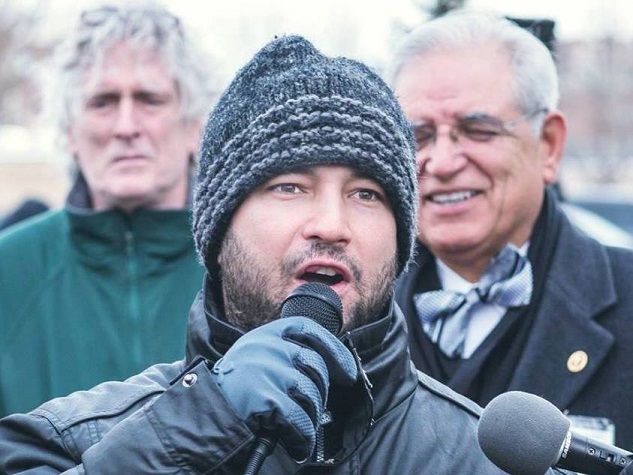
by Deep Green Resistance News Service | Feb 17, 2017 | Movement Building & Support, Strategy & Analysis
by Vincent Emanuele / Z Communications
Tonight, I attended a town hall meeting featuring John Zody, the utterly uninspiring and banal Chairman of the Indiana Democratic Party. The meeting was as informative and inspiring as it was frustrating and sad. Without doubt, the Indiana Democratic Party is in serious trouble. In a county that’s 48% people of color, less than five of the 65 folks in attendance were black or brown.
Honestly, I actually feel bad for the party and its die-hard supporters. That’s no bullshit. They’re so fractured and disorganized it’s almost unbelievable. For instance, the so-called leaders of the Lake County Democrats were too busy drinking Budweisers at the VFW bar to even pay attention to what most of their constituents were saying. That’s the level of respect the Democratic Party gives its people.
Mark Lopez, the top aide for Rep. Pete Visclosky (D-IN), spent the night walking around the room, making sly remarks under his breath, and shaking hands with the local drunks and criminals who operate the party at the county level. If you don’t know the history of the Democratic Party in Chicago or Lake County, Indiana, please, do some research.
At this point, I’m convinced that anyone who thinks they’re going to reform the Democratic Party is not only wrong, they are completely out of touch with reality. The Democratic Party resembles a walking zombie that doesn’t even realize it’s dead yet. That’s how bad tonight was, at least in terms of what people should expect for the future of the Indiana Democratic Party.
However, and this is a very important distinction, the people who attended tonight’s meeting, particularly the women in the room, had very interesting things to say about organization, values, vision and the future. They want a serious platform and they’re willing to work for it. They made tonight’s meeting worthwhile and interesting.
That being said, my frustration with the Left is limitless. To be clear, if the Left had its shit together, it could control entire swaths of this country, including places like Northwest Indiana. The people are ready. They want to organize. You know what I heard people say throughout tonight’s event? “How can we organize? How do we create grassroots organizations? Where are the tools and resources?”
In other words, the things that people were asking of Zody and the Democratic Party – resources, vision, money, manpower – should be provided by the Left. Those things will not come from traditional unions. In fact, as time moves along, I have less and less faith that organized labor will do a damn thing for the people of Indiana. After all, in 1962, Indiana was the third most unionized state in the country. Today, those unions are in shambles.
In many ways, unfortunately, they are part of the problem. The unions who operate in Indiana do not educate or organize their members, yet they badger those who voted for Trump. That’s not a winning strategy. I heard several people tonight talk about ignorant “hillbillies” and union members who “don’t get it.” In the meantime, instead of organizing their members and helping local community groups, unions in the Hoosier state wasted millions of dollars trying to elect centrist Democrats like Evan Bayh and John Gregg.
Undoubtedly, we need new institutions and we need to build them now. That’s the sort of work that gets me excited. And yet, I’m willing to work with local progressive Dems, for strategic reasons, but on our terms, not theirs. There is, for lack of a better term, a power vacuum in Northwest Indiana.
The Republican Party sure isn’t going to fill it. Black and brown people in the sate of Indiana aren’t going to all the sudden turn conservative. And after tonight, I’m more than convinced that the Democratic Party isn’t going to fill the gap. So, who, or what, will? That’s the question activists and organizers must answer, and soon.
Yes, right now, we have plenty of people in the streets. But these actions remind me of 2006-2008, when people were overwhelmingly opposed to the Bush regime. Yes, we were anti-Bush, but we never created alternatives to the Democrats or the major NGOs, many of whom continue to influence and/or control the major demonstrations taking place against Trump.
In many ways, I liken the Left’s current dilemma to someone thinking about getting back into good physical shape. You don’t go to the gym and expect to bench press 300lbs without years of laying a solid foundation. You don’t go to jiu jitsu practice expecting to successfully grapple black belts in your first couple years. These things take time.
We need to build a solid foundation and that becomes very difficult if we’re beholden to news cycles. My advice: stop watching the news. Stop paying attention to the day-to-day madness of the Trump regime. Sit back, read, think, reflect and learn. That’s the only way we’ll stop making the same mistakes we’ve made for decades.
People want to act, and that’s great. But if those actions aren’t tied to something larger, more substantive, they’ll be fruitless in the long-term. I fully understand everyone’s sense of urgency, but I’m starting to think that level of anxiety is extremely unhealthy and rather unproductive.
We need activists to operate with less emotions and urgency, and with more focus, which requires discipline, education and time. We don’t have time, but we can engender discipline and a radical political education.
Vincent Emanuele is a writer, journalist and activist who lives in Michigan City, Indiana. He hosts “Meditations and Molotovs” which airs every Monday @1:00pm(CST) on the Progressive Radio Network (prn.fm) and can be reached at vincent.emanuele333@gmail.com
by kyle0lee | Feb 14, 2017 | Noncooperation, Women & Radical Feminism
Featured Image: A strike against violence against women in Buenos Aires, October 2016. (Image: Eitan Abramovich/AFP/Getty Images)
by Raquel Rosario Sanchez / Feminist Current
The Argentinian feminist collective behind Black Wednesday back in October have called for an International Women’s Strike. Planned to coincide with the International Day to End Violence Against Women, Ni Una Menos (Not One Less) is calling for women everywhere to strike on March 8th.
Black Wednesday was the first region-wide march to protest male violence against women and girls. It rallied women in Latin America around the concept of femicide, which describes the murder of women and girls at the hands of men. Femicide targets females specifically, and is an epidemic in Latin America and the Caribbean, as well as in countries across the world. As such, it is the cornerstone of Latin American feminist activism.
In their manifesto, Ni Una Menos states:
“We strike because the victims of femicide are missing among us. Their voices were violently shut down by the chilling drum of one femicide per day in Argentina.”
Although Ni Una Menos is based out of Argentina, on Black Wednesday women and girls were joined in a massive display of feminist solidarity by thousands in Uruguay, Paraguay, Perú, Chile, Venezuela, Colombia, México, Honduras, Guatemala, Ecuador, and Spain. Following the success of the Polish women’s strike against abortion, Black Wednesday, and the Women’s March in Washington and sister marches, numerous countries around the world are expected to join the March 8th strike.
Ni Una Menos’ manifesto reads:
“This March 8th the earth will shake. Women around the world will unite and organize around one common goal: an International Women’s Strike. We women will strike, organize and build solidarity among ourselves. We will practice the world in which we want to live.
We strike to bring attention to:
The capital that exploits us in the informal economy. The state and market forces that exploit us when they put us in debt. The nation-states that criminalize our migration. The fact that we make less money than men and our wage discrimination is, on average, 27 per cent. We strike because of the economic violences that heighten our vulnerability to misogynist violence, whose most violent extreme is femicide. We strike to demand abortion on demand and so that no girl is forced to become a mother.
Among us are missing the lesbians and transwomen who were murdered under hate crimes. The political prisoners, the persecuted, the women murdered in our Latin American territory for defending the land and resources. Among us are missing the women who died and the ones who remain in prison due to unsafe abortions. We are missing among us the ones who were disappeared by traffickers and the victims of sexual exploitation.
We appropriate the tool of striking because our demands are urgent. The strength of our movement is in the bond we create with other women. We are braiding a new internationalism. We see the neoconservative turn that’s taking place in the region and in the world, so the feminist movement is surging as an alternative. 2017 is the time for our revolution.
When our homes become hell, we organize to defend each other and protect one another. In the face of the crimes of machismo and its pedagogy of cruelty and in the face of the media’s attempt to victimize us and terrorize us, we make of our individual grieving a collective comfort and a shared enragement. In the face of cruelty: more feminism.”
With over 30 countries set to join the strike, the rallying cry, “Solidarity is our weapon,” is fitting. Indeed, this has always been the ethos of the women’s movement. Now more than ever before, solidarity is exactly what is needed.
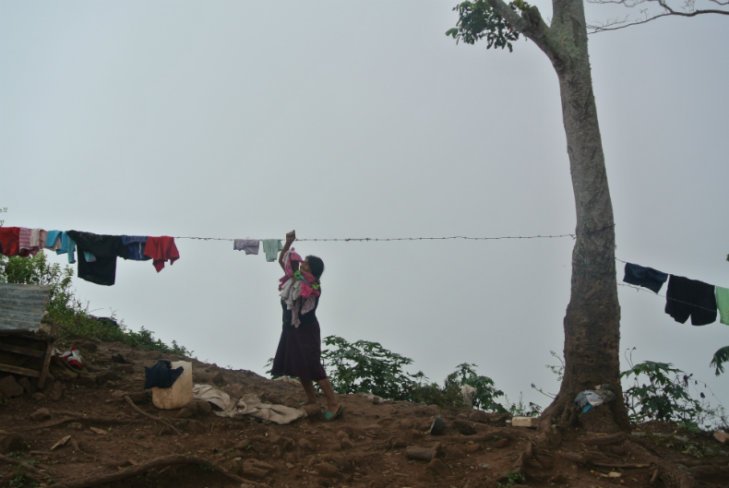
by Deep Green Resistance News Service | Jan 24, 2017 | Colonialism & Conquest, Indigenous Autonomy
Featured image: A Yukpa woman tends laundry high in the clouds of the Yukpa lands, which rise over 3000 meters in the Sierra Perijá on the border of Colombia and Venezuela.
by Nicholas Parkinson / Intercontinental Cry
A community of indigenous Yukpa saw their land reduced to a third of what it once was due to violence and intimidation. Now Colombia’s Land Restitution Unit is helping the community return to their lands.
The spiritual equilibrium essential to the Yukpa community is off balance. Ancestral burial grounds have been desecrated by invaders; the trees that house the spirits are being cut down; and the wild game that Yukpa men once hunted with zeal is no longer available. The same limitations preventing the community from practicing its culture are preventing Yukpa parents from passing these activities, words, and stories down to new generations.
“The loss of culture is very real. Our children won’t know anything about the Yukpa if we aren’t rescued from extinction. If we don’t have space to preserve our culture, I guarantee that in thirty years, our culture will disappear,” says Andrés Vence, council leader of a Yukpa community consisting of 120 families living on 300 hectares in the Sierra Perijá on the border of Venezuela and Colombia.
“Culture’s longevity depends on territory.”
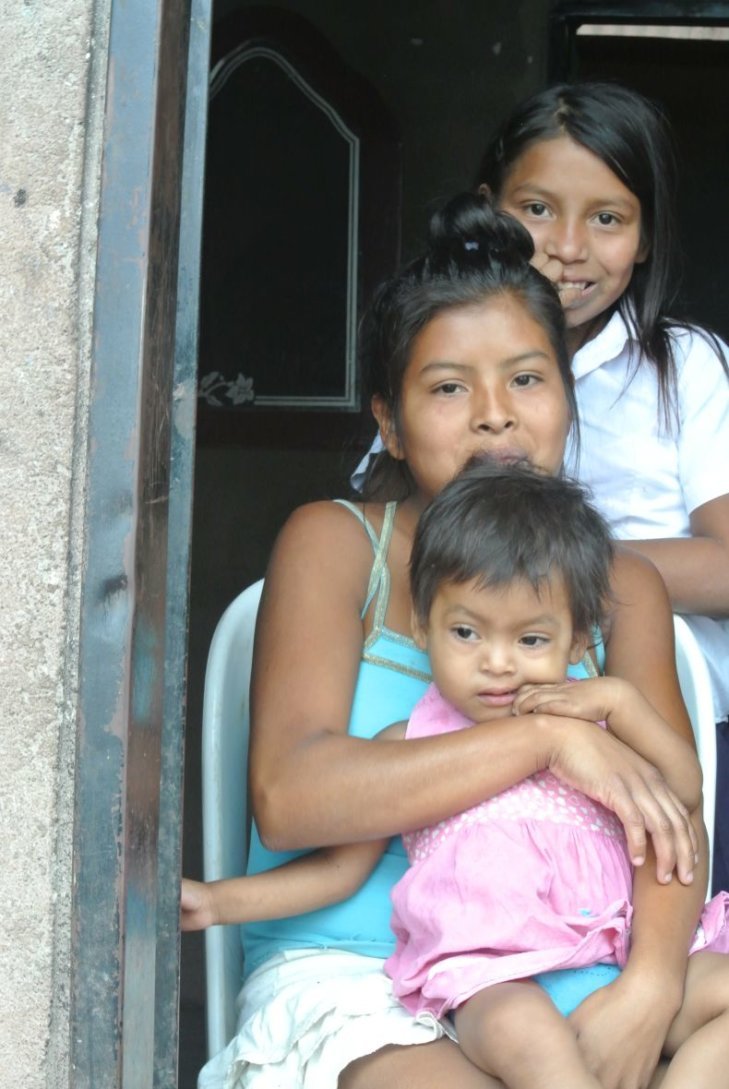
The yukpa believe that land is the key to allowing their culture, customs and beliefs to flourish.
There are an estimated 6,000 Yukpa remaining in Colombia, and the majority live on autonomous lands known as resguardos. Over the past thirty years, the Yukpa community living in La Laguna has been victim to abuse and intimidation stemming from the armed conflict. The community has also seen its ancestral lands become increasingly occupied by “outsiders,” whom they refer to as colonists. Now, the community is pushing back by launching an ethnic restitution claim that seeks to recover 964 hectares of land and allow the community the space it needs to flourish.
HUMILIATION AND ABUSE
In 1982, the guerrilla group known as the FARC came to Yukpa territory to recruit. Andrés Vence was abducted for eight days to be indoctrinated. He and the Yukpa resisted, but then another guerrilla group known as ELN arrived the following year. After the ELN abducted several young men, Vence and his men–armed with just bows and arrows–marched into the guerrilla camp and took their children back, saying the Yukpa would not participate in any war.
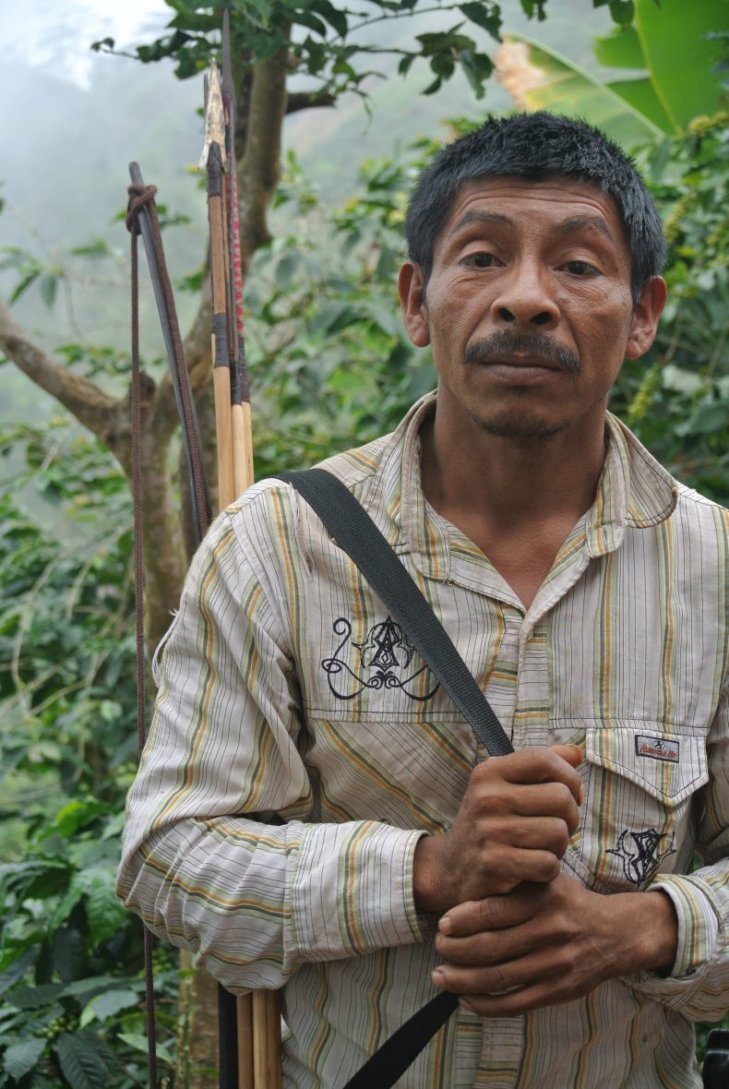
A Yukpa security guard, still armed with bow and arrow.
When the Colombian military entered the scene in the mid-1990s, the situation turned for the worst. Yukpa families could no longer move freely from house to house, leading to the systematic abandonment of more than 900 hectares of land. For years, military checkpoints restricted the flow of food between families. As if that wasn’t bad enough, paramilitary groups—who were often the same members of the military—came to the Yukpa villages at night to terrorize the community.
“They abused and humiliated us,” says Vence. “I think it was all in the hopes that we would open our mouths and say something that gave them the right to murder us.”
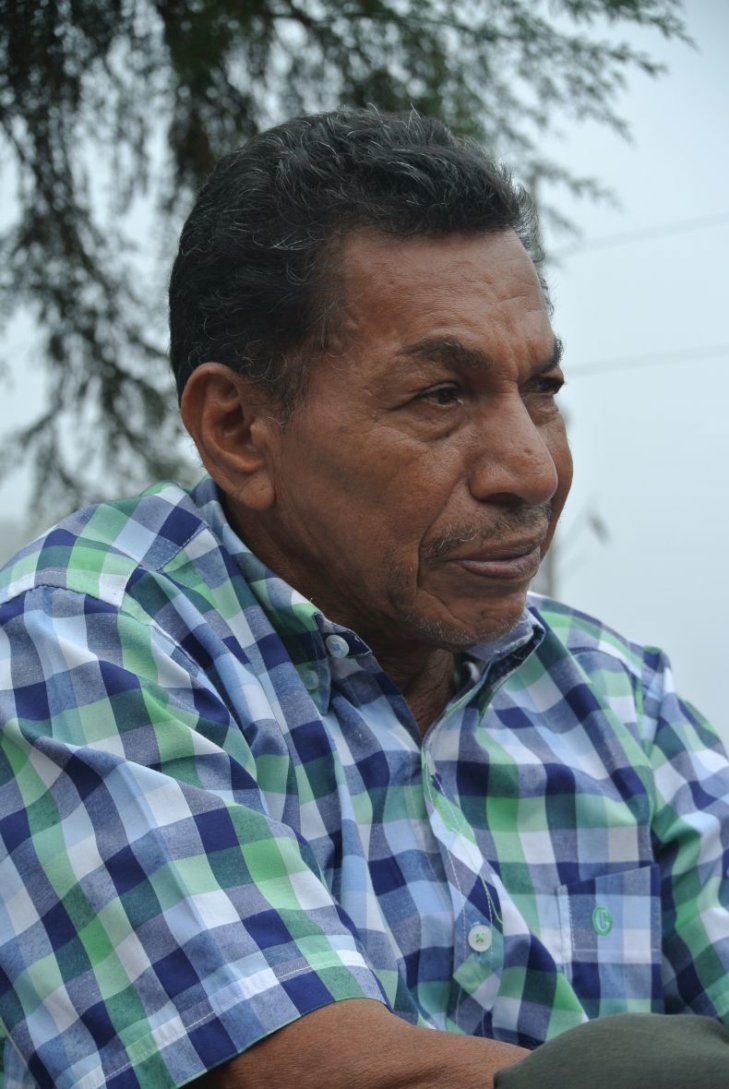
Andrés Vence, mayor and leader of the Yukpa community making the restitution claim.
DOCUMENTED HISTORY
In 2015, the regional Land Restitution Unit (LRU) in Cesar focused on “characterization studies,” an essential piece of evidentiary material that documents the background, victimization, and suffering of indigenous communities who wish to reclaim their land. Characterization is a critical step in substantiating an ethnic restitution claim. The USAID-funded Land and Rural Development Program* partnered with the LRU to expedite the process.
Over the course of six months, researchers visited the Yukpa, where they interviewed individual members and held focus groups. They also collected materials from the government, non-governmental organizations, academic texts, and the media. The end result was nearly 200 pages of history, mapping, experience, and evidence presenting how the armed conflict contributed to the decimation of the Yukpa’s culture, livelihood, and overall prosperity.
In addition to carrying out the characterization studies, USAID helped regional restitution offices improve coordination with partner members of the Victims Assistance and Comprehensive Reparations System and municipal officials.
“The partnership gave us operating capacity. Without this support, we would have taken another one or two years to get to this case,” says Jorge Chávez, Director of the Land Restitution Unit in Cesar.
The document will be filed as part of the Yukpa community’s land restitution claim, which will go before a restitution judge before the end of the year. By law, judges must issue a ruling within six months after a restitution claim is filed in the court. In Cesar, the Yukpa case will be the third ethnic restitution case to reach the courts, making the department an important player in the nationwide effort to heal the historic rift between the government and Indigenous Peoples.
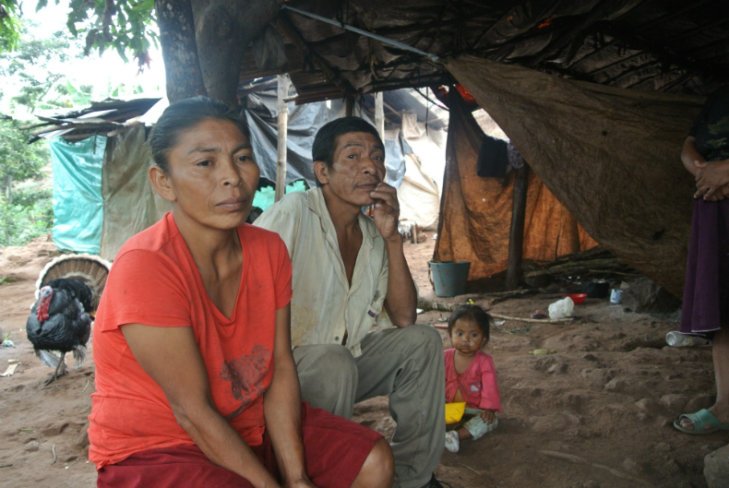
Colombia’s indigenous communities are often the country’s most vulnerable. Over the past five years, Colombian restitution judges have issued three ethnic restitution sentences, delivering over 124,000 hectares of land back to indigenous communities.
There are currently over 24 ethnic restitution cases in the characterization phase that stand to affect over 10,000 families in Colombia.
“All over the country, there are ethnic restitution cases reaching judges. The LRU is in its fifth year and these cases are becoming more and more important to resolve. This particular case is very important because the Yukpa are losing their cultural identity, and we recognize that,” according to Chávez.
In its five years, restitution judges have issued three ethnic restitution sentences, delivering over 124,000 hectares of land back to indigenous communities.
As the Yukpa wait on the judge’s ruling, the case’s progress has emboldened Vence to mobilize the community—including the older citizens known as Yimayjas—to transmit the collective memory and cultural skills like weaving mochilas, practicing spiritual rites, and crafting shields to fend off malignant spirits.

Every Wednesday and Friday, Yukpa children attend “Yukpa studies” at the only school in the resguardo.
A favorable ruling will be key to restoring Yukpa faith in the Colombian government. “We’ve put pressure on the government for many years to do this, so our hope is temporary. We watch television, and indigenous culture is never part of the conversation. Indigenous communities are the most vulnerable,” explains Vence.
* Nicholas Parkinson works for the Land and Rural Development Program.
Nicholas is an NGO writer currently based in Bogota, Colombia and working on a large land tenure program that sets out to strengthen government land administration agencies to better serve millions of victims displaced by the violence. Over the past six years, he has worked mainly on agriculture-focused projects in Ethiopia, Liberia, Uganda and Somalia, among others. He specializes in NGO documentation and teaches local writers how to create attention-grabbing stories for their NGOs. On his weblog you can find stories from his immigrant life, some thoughts on development aid, and a strong dose of rock climbing and adventure.
by Deep Green Resistance News Service | Jan 12, 2017 | Climate Change, Listening to the Land
by Jason Hickel / Local Futures
It’s getting hot out there. For a stretch of 16 months running through August 2016, new global temperature records were set every month.[1] Ice cover in the Arctic sea hit a new low this past summer, at 525,000 square miles less than normal. [2] And apparently we’re not doing much to stop it: according to Professor Kevin Anderson, one of Britain’s leading climate scientists, we’ve already blown our chances of keeping global warming below the “safe” threshold of 1.5 degrees. [3]
If we want to stay below the upper ceiling of 2 degrees, though, we still have a shot. But it’s going to take a monumental effort. Anderson and his colleagues estimate that in order to keep within this threshold, we need to start reducing emissions by a sobering 8-10% per year, from now until we reach “net zero” in 2050. [4] If that doesn’t sound difficult enough, here’s the clincher: efficiency improvements and clean energy technologies will only win us reductions of about 4% per year at most.
How to make up the difference is one of the biggest questions of the 21st century. There are a number of proposals out there. One is to capture the CO2 that pours out of our power stations, liquefy it, and store it in chambers deep under the ground. Another is to seed the oceans with iron to trigger huge algae blooms that will absorb CO2. Others take a different approach, such as putting giant mirrors in space to deflect some of the sun’s rays, or pumping aerosols into the stratosphere to create man-made clouds.
Unfortunately, in all of these cases either the risks are too dangerous, or we don’t have the technology yet.
This leaves us in a bit of a bind. But while engineers are scrambling to come up with grand geo-engineering schemes, they may be overlooking a simpler, less glamorous solution. It has to do with soil.
Soil is the second biggest reservoir of carbon on the planet, next to the oceans. It holds four times more carbon than all the plants and trees in the world. But human activity like deforestation and industrial farming – with its intensive ploughing, monoculture and heavy use of chemical fertilisers and pesticides – is ruining our soils at breakneck speed, killing the organic materials that they contain. Now 40% of agricultural soil is classed as “degraded” or “seriously degraded”. In fact, industrial farming has so damaged our soils that a third of the world’s farmland has been destroyed in the past four decades. [5]
As our soils degrade, they are losing their ability to hold carbon, releasing enormous plumes of CO2 into the atmosphere.
There is, however, a solution. Scientists and farmers around the world are pointing out that we can regenerate degraded soils by switching from intensive industrial farming to more ecological methods – not just organic fertiliser, but also no-tillage, composting, and crop rotation. Here’s the brilliant part: as the soils recover, they not only regain their capacity to hold CO2, they begin to actively pull additional CO2 out of the atmosphere.
The science on this is quite exciting. A study published recently by the US National Academy of Sciences claims that regenerative farming can sequester 3% of our global carbon emissions. [6] An article in Science suggests it could be up to 15%. [7] And new research from the Rodale Institute in Pennsylvania, although not yet peer-reviewed, says sequestration rates could be as high as 40%. [8] The same report argues that if we apply regenerative techniques to the world’s pastureland as well, we could capture more than 100% of global emissions. In other words, regenerative farming may be our best shot at actually cooling the planet.
Yet despite having the evidence on their side, proponents of regenerative farming – like the international farmers’ association La Via Campesina – are fighting an uphill battle. The multinational corporations that run the industrial food system seem to be dead set against it because it threatens their monopoly power – power that relies on seeds linked to patented chemical fertilisers and pesticides. They are well aware that their methods are causing climate change, but they insist that it’s a necessary evil: if we want to feed the world’s growing population, we don’t have a choice – it’s the only way to secure high yields.
Scientists are calling their bluff. First of all, feeding the world isn’t about higher yields; it’s about fairer distribution. We already grow enough food for 10 billion people.[9] In any case, it can be argued that regenerative farming actually increases crop yields over the long term by enhancing soil fertility and improving resilience against drought and flooding. So as climate change makes farming more difficult, this may be our best bet for food security, too.
The battle here is not just between two different methods. It is between two different ways of relating to the land: one that sees the soil as an object from which profit must be extracted at all costs, and one that recognizes the interdependence of living systems and honours the principles of balance and harmony.
Ultimately, this is about more than just soil. It is about something much larger. As Pope Francis put it in his much-celebrated encyclical, our present ecological crisis is the sign of a cultural pathology. “We have come to see ourselves as the lords and masters of the Earth, entitled to plunder her at will. The sickness evident in the soil, in the water, in the air and in all forms of life are symptoms that reflect the violence present in our hearts. We have forgotten that we ourselves are dust of the Earth; that we breathe her air and receive life from her waters.”
Maybe our engineers are missing the point. The problem with geo-engineering is that it proceeds from the very same logic that got us into this mess in the first place: one that treats the land as something to be subdued, dominated and consumed. But the solution to climate change won’t be found in the latest schemes to bend our living planet to the will of man. Perhaps instead it lies in something much more down to earth – an ethic of care and healing, starting with the soils on which our existence depends.
Of course, regenerative farming doesn’t offer a permanent solution to the climate crisis; soils can only hold a finite amount of carbon. We still need to get off fossil fuels, and – most importantly – we have to kick our obsession with endless exponential growth and downsize our material economy to bring it back in tune with ecological cycles. But it might buy us some time to get our act together.
A slightly different version of this piece appeared in The Guardian, September 10, 2016.
[1] “August 2016 Global Temperatures Set 16th Straight Monthly Record”, weather.com, Sept. 20, 2016.
[2] “Arctic sea ice crashes to record low for June”, The Guardian, July 7, 2016.
[3] “Going beyond ‘dangerous’ climate change”, London School of Economics lecture, Feb 4, 2016.
[4] Anderson, Kevin, “Avoiding dangerous climate change demands de-growth strategies from wealthier nations”, Nov. 25, 2013.
[5] “Earth has lost 1/3 of arable land in last 40 years”, The Guardian, Dec. 2, 2015.
[6] Gattinger, Andreas, et al, “Enhanced topsoil carbon stocks under organic farming”, Proceedings of the National Academy of Science, vol. 109 no. 44.
[7] Lal, R., “Soil Carbon Sequestration Impacts on Global Climate Change and Food Security”, Science magazine, June 11, 2004.
[8] Rodale Institute, “Regenerative Organic Agriculture and Climate Change”, April 17, 2014.
[9] Altieri, Miguel et al, “We Already Grow Enough Food for 10 Billion People … and Still Can’t End Hunger”, Journal of Sustainable Agriculture, July, 2012.










